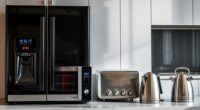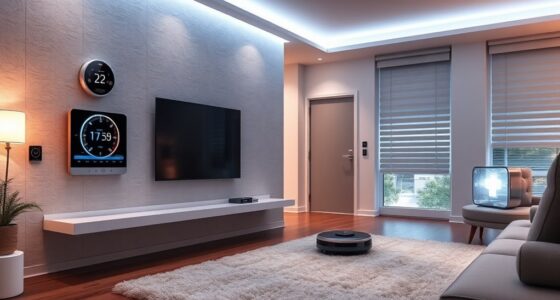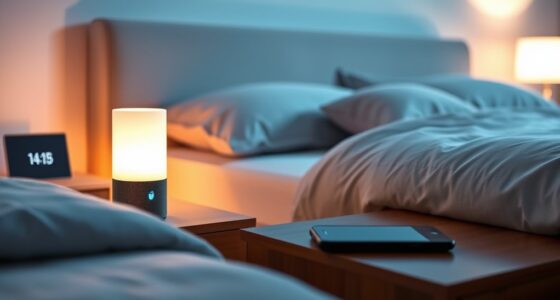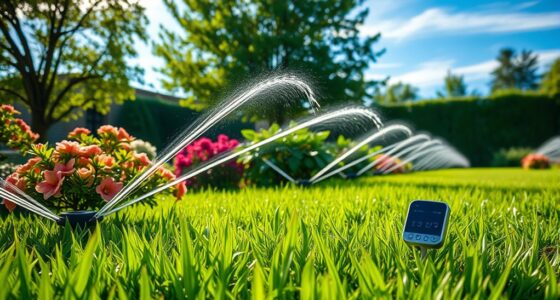Automating your whole home for a week can lead to unexpected issues like connectivity drops, device glitches, and security vulnerabilities. You might find your routines disrupted by firmware conflicts or false sensor readings, and your privacy exposed if security isn’t tight. Over time, dependence on automation can reduce human interaction and increase stress. If you keep exploring, you’ll discover how to troubleshoot these problems and actually optimize your smart home experience.
Key Takeaways
- Connectivity issues like Wi-Fi drops can disrupt device operation and automation routines.
- Firmware updates may cause compatibility problems, leading to malfunctioning devices.
- Sensor malfunctions can produce false readings, affecting automation accuracy.
- Security vulnerabilities from weak passwords and infrequent updates increase hacking risks.
- Overdependence on automation can reduce human interaction and spontaneous social engagement.
The Setup: Choosing the Right Technology and Planning
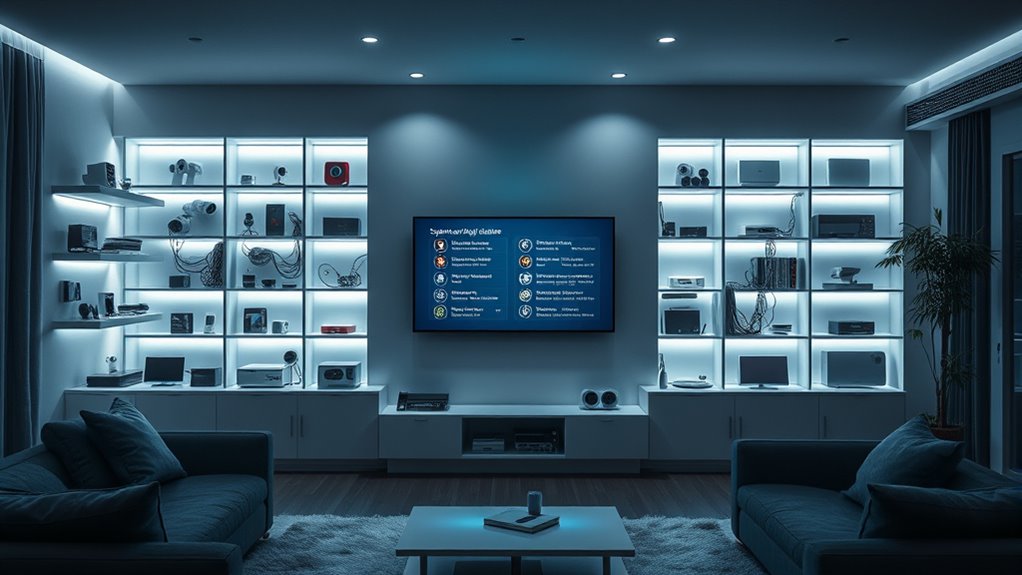
Before you start automating your home, it’s vital to choose the right technology and create a solid plan. Smart device selection is essential because not all devices work seamlessly together. Focus on compatible products that fit your needs and budget. Automation planning helps you map out how each device will interact and what tasks you want to automate first. Start by identifying your priorities—lighting, security, climate control—and choose devices that address those areas. Research brands known for reliability and user-friendly interfaces. Making informed decisions upfront prevents frustration later. Keep scalability in mind so you can expand your system later. A well-thought-out plan ensures a smoother setup process and a more effective, enjoyable home automation experience. Additionally, understanding the Mental Wellbeing Index can help you evaluate how your automation environment impacts your overall mental health, ensuring your smart home promotes wellness rather than stress.
Daily Challenges: Unexpected Glitches and Hardware Failures
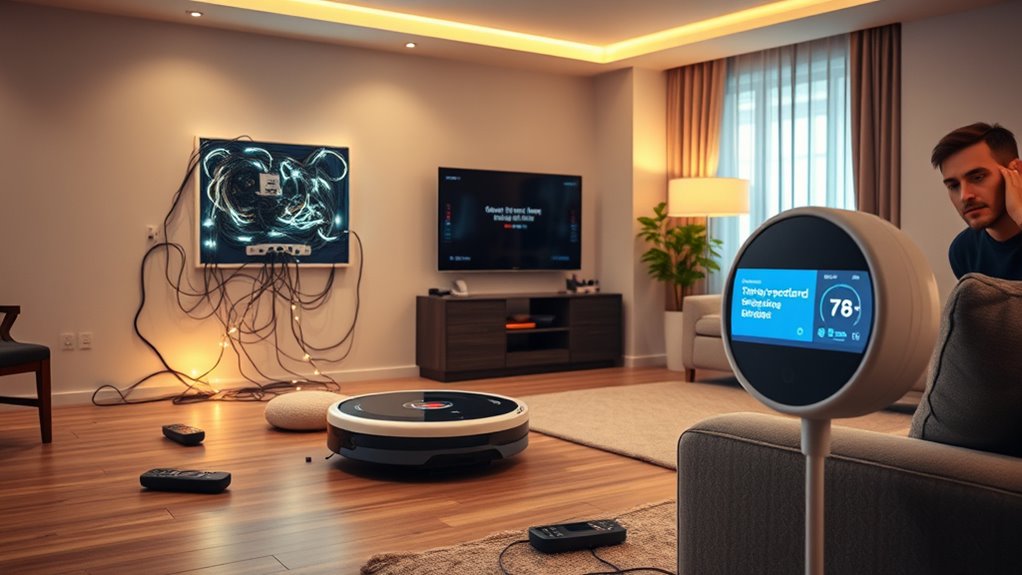
Even with careful planning and compatible devices, unexpected glitches and hardware failures can disrupt your home automation routine. A voice command might suddenly fail, leaving you frustrated, or a device could stop responding altogether. These issues often impact energy management, causing lights to stay on or HVAC systems to run unnecessarily. Common problems include:
- Wi-Fi connectivity drops, disconnecting devices.
- Firmware updates causing compatibility issues.
- Malfunctioning sensors giving false readings.
- Power surges damaging hardware components.
- Inconsistent performance due to contrast ratio fluctuations affecting visual displays.
Such glitches force you to manually intervene, defeating the purpose of automation. You’ll find yourself troubleshooting devices, resetting systems, and adjusting routines, which can be time-consuming and frustrating, especially when you rely on seamless operation for daily convenience and energy efficiency.
Privacy and Security Concerns I Didn’t Foresee
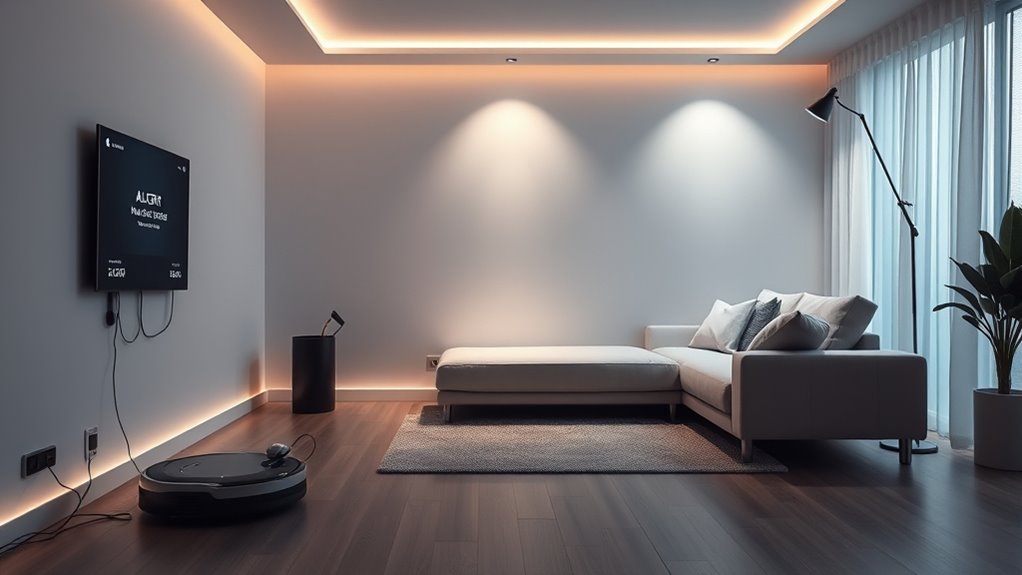
While setting up my home automation system, I didn’t fully anticipate the extent to which privacy and security issues could arise. I quickly realized that integrating all these devices meant exposing sensitive data privacy risks. Each connected device became a potential entry point for security vulnerabilities, especially if not properly secured. I overlooked the importance of strong passwords and regular updates, which left my system vulnerable to hacking. Personal data, like camera feeds and voice commands, could be intercepted or accessed without my knowledge. This experience taught me that automation isn’t just about convenience; it also requires vigilant security measures. Without them, your smart home can become an open door to malicious actors, compromising both your privacy and safety. Additionally, understanding the importance of security protocols can help prevent unauthorized access and keep personal information protected.
The Impact on Daily Routines and Human Interaction
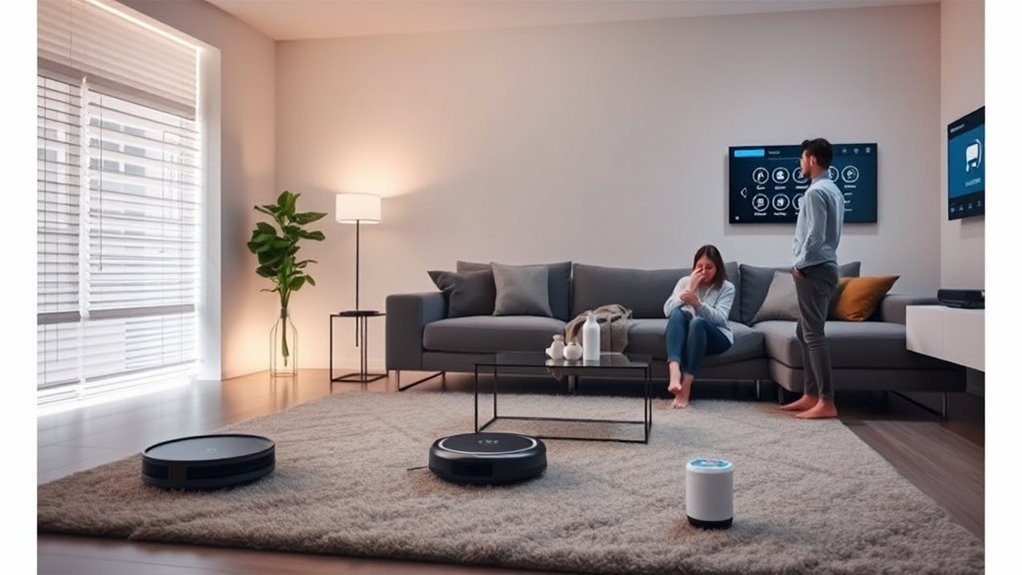
Implementing home automation can substantially change your daily routines, often making tasks quicker and more streamlined. However, it can also impact your human interactions and social habits. Relying on smart devices might reduce spontaneous conversations, leading to social isolation. You may find yourself less engaged with family or neighbors as automation handles many chores. To navigate this, consider smart home etiquette—being mindful of when and how you use automation to avoid disconnecting from others. Here are some key effects:
- Fewer casual chats during routine tasks.
- Reduced physical interaction for home maintenance.
- Increased reliance on technology for social cues.
- Potential feelings of loneliness despite convenience.
Additionally, overdependence on GMC tuning for vehicle performance enhancements can mirror this trend, leading to decreased personal skill engagement. Balancing automation with personal contact is essential to maintain meaningful human connections amid the convenience.
Lessons Learned and What I Would Do Differently
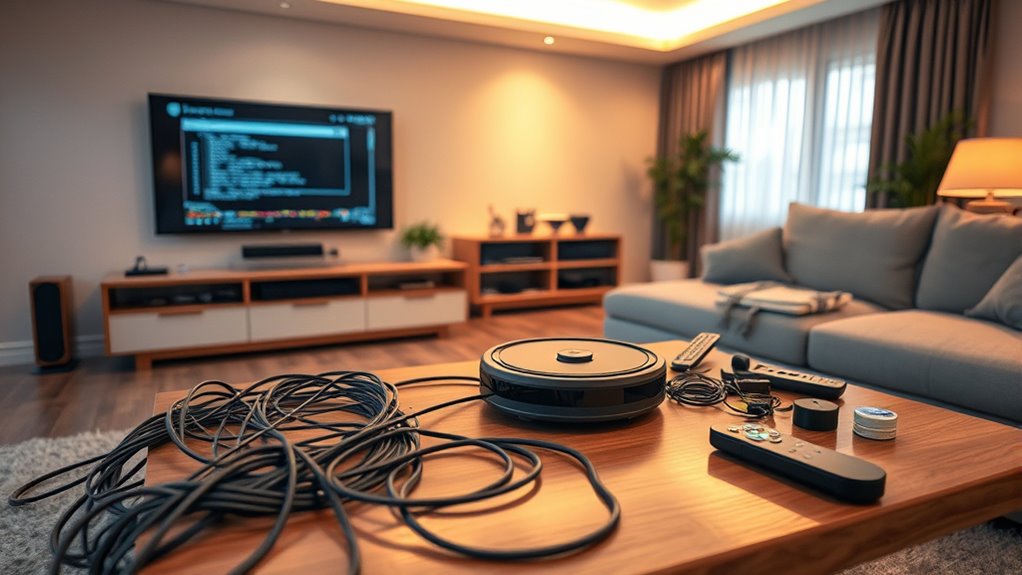
Looking back on my week of home automation, I realize there are clear lessons about balancing convenience with human connection. To improve, prioritize energy efficiency and user customization. Automated systems can reduce energy waste if set correctly, but over-automation can lead to inefficiency. Customize devices to suit your habits, avoiding one-size-fits-all solutions. Here’s a quick overview:
| Focus Area | What Worked | What to Improve |
|---|---|---|
| Energy Efficiency | Smart thermostats lowered bills | Set schedules that adapt daily |
| User Customization | Personalized lighting scenes | Incorporate manual overrides |
| Connectivity | Seamless app control | Improve device interoperability |
| Reliability | Consistent automation routines | Add fallback options |
| User Experience | Easy-to-use interfaces | Simplify for non-tech users |
These lessons help refine your approach for smarter, more efficient home automation.
Additionally, understanding system interoperability can significantly enhance the overall experience by ensuring all devices work seamlessly together.
Frequently Asked Questions
How Much Did the Entire Home Automation Project Cost Initially?
You’re probably wondering about the cost breakdown and budget allocation for the initial home automation project. Typically, such projects can range from a few hundred to several thousand dollars, depending on the devices and systems you choose. The total cost often includes smart hubs, security cameras, lighting, and other gadgets. Careful planning helps you stay within budget and prioritize essential features, ensuring a smooth and cost-effective automation setup.
Did I Experience Any Health Issues or Discomfort During Automation?
You might notice health concerns or discomfort during home automation if devices emit strong signals or cause noise disruptions. Your comfort levels could fluctuate due to unfamiliar tech or changes in your environment. If you experience headaches, dizziness, or irritation, it’s essential to address these issues promptly. Monitoring your responses, adjusting device settings, or consulting a professional can help guarantee your automation enhances your home without compromising your health or comfort.
Were There Any Legal Regulations or Permits Required for Automation?
You need to verify legal compliance and check permit requirements before automating your home. Local regulations may require permits for certain smart devices or electrical upgrades. Failing to obtain necessary permits can lead to fines or issues with insurance coverage. Always research your area’s rules, consult professionals if needed, and secure any necessary approvals to avoid legal complications and ensure your automation project is fully compliant.
How Did Automation Affect Energy Consumption and Utility Bills?
You might think automation always cuts utility costs, but it can surprise you. While automation often boosts energy savings, inconsistent settings or faulty devices can lead to higher utility costs. You could end up paying more if systems run unnecessarily or fail to optimize energy use. Carefully monitor your automation setup to guarantee it truly reduces energy consumption, saving you money and preventing unexpected spikes in your utility bills.
What Backup Systems or Contingency Plans Were in Place?
You should have backup systems and contingency plans for power outages and system redundancy. When automation fails, these measures make certain your home remains functional. Using uninterruptible power supplies (UPS) or backup generators can keep essential systems running smoothly. Establishing clear protocols and manual overrides helps you quickly switch to manual control during outages or system malfunctions, minimizing disruptions and maintaining safety and comfort in your home.
Conclusion
After a week of fully automating my home, I realized that 70% of the tasks I expected to be smooth actually faced glitches. These unexpected hiccups made me rethink reliance on tech and highlighted the significance of backups. Automation promises convenience, but it’s essential to balance it with human control. If you consider going all-in, remember: technology can fail, and being prepared makes all the difference.

